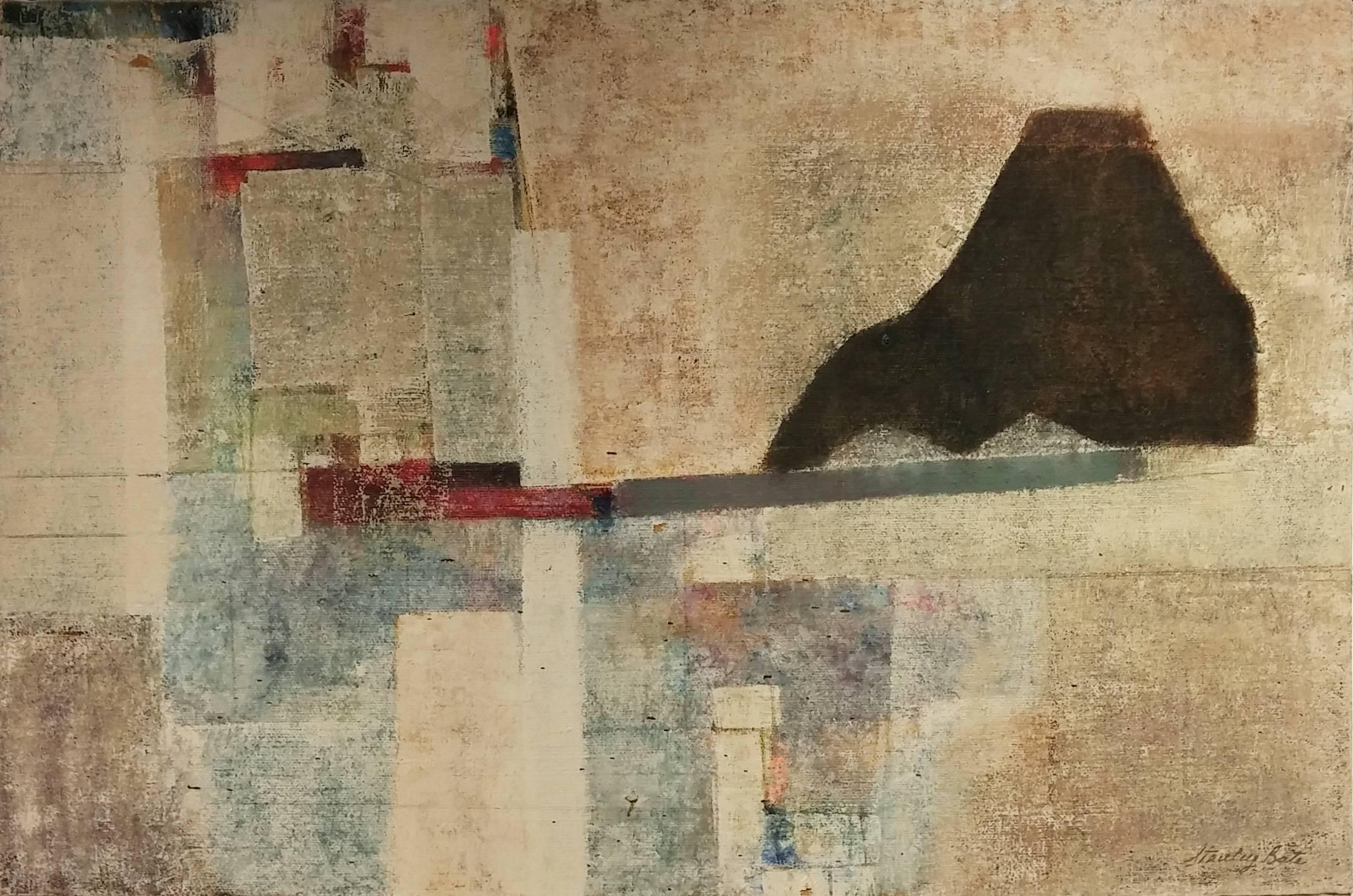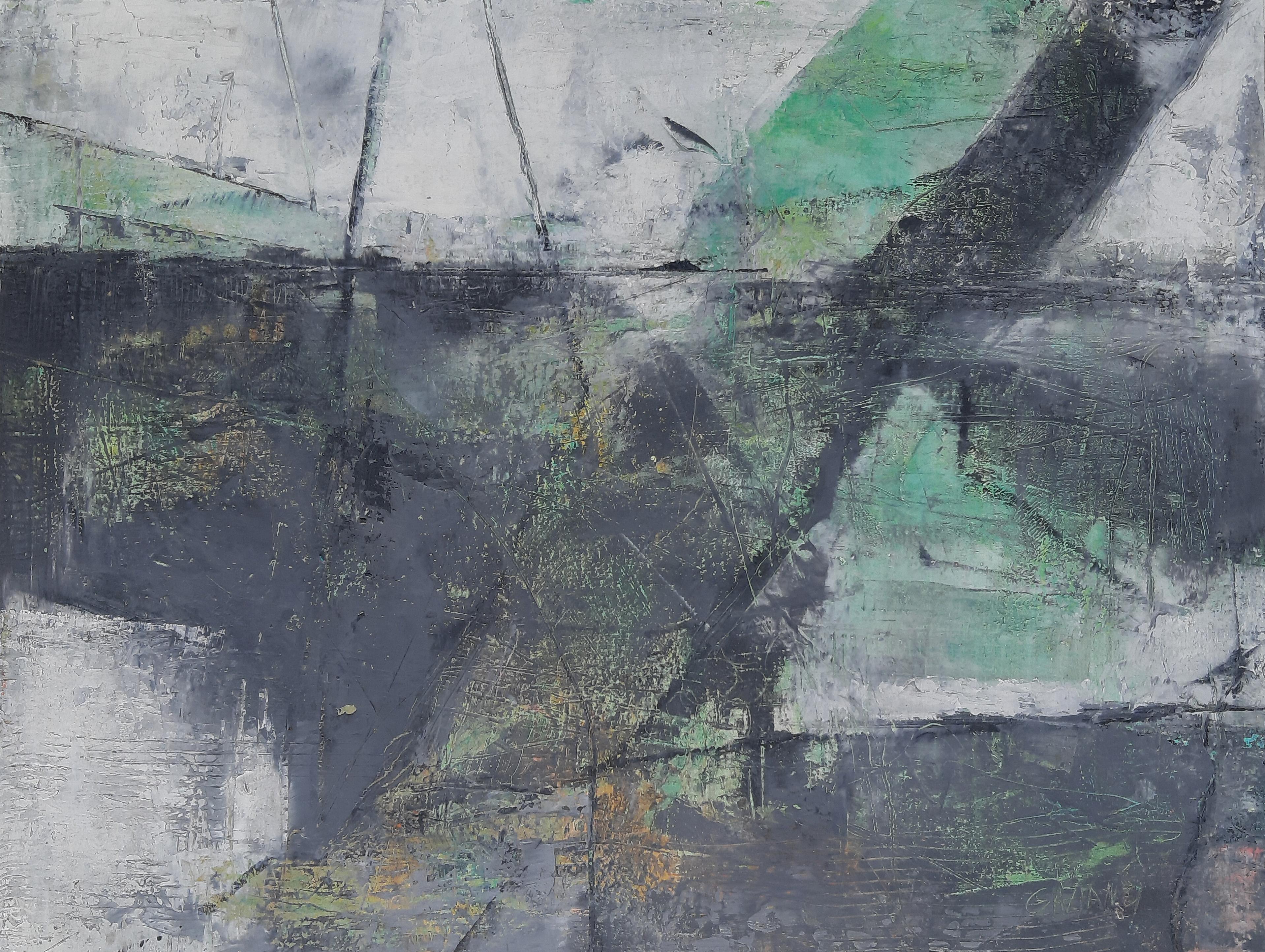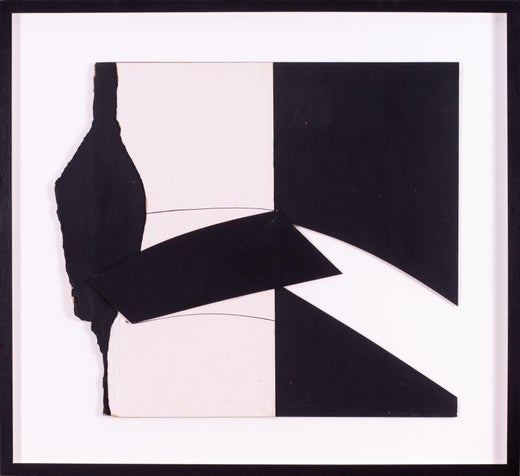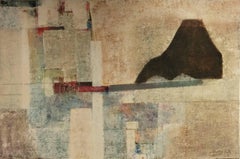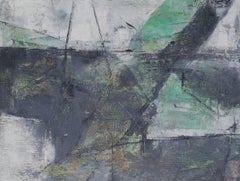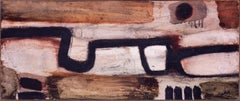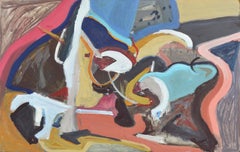Trevor BellAbstract - British Moderist Abstract Art - 1950's St Ives School oil painting1950
1950
About the Item
- Creator:Trevor Bell (1930, British)
- Creation Year:1950
- Dimensions:Height: 36 in (91.44 cm)Width: 48 in (121.92 cm)Depth: 2 in (5.08 cm)
- Medium:
- Movement & Style:
- Period:
- Condition:
- Gallery Location:Hagley, GB
- Reference Number:1stDibs: LU853113397582
Trevor Bell
Trevor Bell, the last of the St Ives modernists was an English Leeds-born artist and contemporary visual artist. Bell was awarded a scholarship to attend the Leeds College of Art between 1947–52 and encouraged by Terry Frost, moved to Cornwall in 1955. Bell was drawn to St Ives, Cornwall as at that time it was the epicenter for British abstract art being the home to the St. Ives group of artists such as Patrick Heron, Peter Lanyon, Ben Nicholson, Barbara Hepworth and Terry Frost. From these artists, especially Nicholson, Bell received advice and help. Nicholson encouraged him to show in London, and Waddington Galleries gave Bell his first solo exhibition in 1958. Patrick Heron wrote the introduction to the exhibition catalog, stating that Bell was the best non-figurative painter under 30. The following year, Bell was awarded the prize for painting at the Biennale de Paris. He stayed in St. Ives for five years, constantly developing his technique and painting language, but in 1960 was offered the Gregory Fellowship in Painting at the University of Leeds, so he moved back to his hometown. It was during his time at the University of Leeds that Bell developed his shaped canvases, which set his work apart from other abstract artists of his generation. In the 1960s, Bell showed work in exhibitions in the UK and USA including, a major touring exhibition covering 1966–70, organized by the Richard Demarco Gallery in Edinburgh, that traveled to Belfast and Sheffield. During this time, his work was bought for the Tate collection. In 1973, he presented his new work at the Whitechapel Gallery in London, having just taken part in a major exhibition at the Corcoran Gallery in Washington, D.C. Over the next 30 years, Bell combined painting with teaching in various locations, eventually moving to Florida State University, Florida, in 1976 to become the Professor for Master Painting. Herewith, the provision of a warehouse-sized studio and time to develop the painting he produced new and powerful work. He called them his “heatscapes,” reflecting the influence of the sub-tropical climate and landscape on him and his work. He spent the next 20 years in America before returning to west Cornwall, whose dramatic coastlines were an influence upon him, permanently. In 1985, Bell was included in the London Tate Gallery’s, St Ives, 1939–64 exhibition and in 1993, he was part of the inaugural show of the Tate St Ives, where he was again re-established as part of the St Ives artists. He moved back to Cornwall in 1996 and was invited by David Falconer, the former Director of Millennium (Now Anima-Mundi), to have a solo exhibition in St Ives, which has culminated in a long-term relationship with the gallery and its current Director Joseph Clarke. Trevor Bell died on 3 November 2017, at the age of 87 after a short illness.
- ShippingRetrieving quote...Shipping from: Hagley, United Kingdom
- Return Policy
More From This Seller
View All1950s Abstract Abstract Paintings
Oil
1950s Abstract Abstract Paintings
Oil
1950s Abstract Abstract Paintings
Oil
1950s Abstract Abstract Paintings
Oil
1960s Conceptual Abstract Paintings
Oil
1960s Abstract Abstract Paintings
Oil
You May Also Like
1960s Modern Abstract Paintings
Canvas, Oil
Artist Comments
Lighter shades of green and white contrast with the gray elements in this abstract composition. Scratches around the work provide a light texture. Artist Doroth...
21st Century and Contemporary Abstract Abstract Paintings
Oil
20th Century Abstract Abstract Paintings
Oil, Board
1960s Post-War Abstract Paintings
Masonite, Oil
2010s Abstract Abstract Paintings
Acrylic
1960s Abstract Expressionist Abstract Paintings
Mixed Media, Acrylic, Gouache, Permanent Marker

